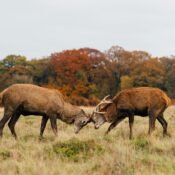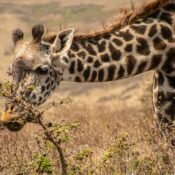
Exploring Tanzanian Rivers: A Journey Along Tanzania’s Lifelines
Tanzania’s rivers are an essential part of its identity. They shape landscapes, support various ecosystems, and provide crucial resources for many. From extending the wetlands of the Rufiji to the tense rapids of the Pangani, each river provides special features to the natural wealth of Tanzania.
This expedition into major rivers of Tanzania talks about the vital role they play, the kind of challenges they face and the conservation efforts devoted to protecting them, with emphasis on the balance which is required to protect Tanzania’s natural heritage for future generations.
Rufiji River
- Overview: It is the largest river in Tanzania, roughly around 600 km flowing from the Southern Highlands to the Indian Ocean.
- Ecological Importance: This river in Tanzania has East Africa’s largest mangrove forest in its delta. The area gives habitats to various wildlife such as fish, crustaceans, hippos, and migratory birds.
- Energy Production: The river has the Julius Nyerere Hydropower Station, which works towards increasing the electricity supply of Tanzania’s
- Environmental concern: This river in Tanzania faces several environmental problems from the Julius Nyerere Hydropower Station, particularly in the Rufiji Delta and Selous Game Reserve (a UNESCO World Heritage site) such as habitat loss.
Pangani River
- Overview: The Pangani River originated from Mount Kilimanjaro and Mount Meru, it stretches roughly about 500 km.
- Economic Role: This river in Tanzania helps in powering hydroelectric dams. Supports agriculture such as rice paddies and banana plantations.
- Tourist Attraction: The notable attraction of the river is Pangani Falls, a scenic area which attracts wholesome visitors
- Challenges: Water pollution, over-extraction of water for irrigation use. Emphasis should be given to sustainable water practices management to balance human needs with environmental conservation.
Mara River
- Overview: The river flows through both Kenya and Tanzania, and it plays an important role in the ecosystem of Serengeti and Maasai Mara.
- Wildlife & Tourism: The Mara River in Tanzania is very crucial for wildlife, particularly during the period of the Great Wildebeest Migration, which draws tourists from all over the globe. It also supports other wildlife such as hippos, crocodiles and many fish species.
- Conservation Challenges: The flow and water quality of the river is affected by factors such as deforestation, agricultural expansion, and water extraction
- Cross-border Cooperation: Tanzania and Kenya have united to manage resources sustainably and focus on the health of watersheds.
Kagera River
- Overview: The Kagera River is the primary tributary to the Nile River. It flows over 400 km through Rwanda, Burundi, and into Lake Victoria.
- Ecological Significance: The Kagera River sustains rich biodiversity and is the main water source for agriculture, fishing, and regular use by local communities.
- Environmental Challenges: The river water quality and ecosystem face challenges from agricultural runoff, deforestation, and waste discharge Many conversation efforts are going on with the aim of improving water quality and reducing pollution.
- Climate Change Impacts: Climate changes disturb the rainfall patterns due to which the flow of rivers is altered resulting in affecting agriculture, fishing, and the amount of water available for Lake Victoria and the broader Nile Basin.
Ruvuma River
- Overview: It forms the border between Tanzania and Mozambique, the River flows roughly around 800 kilometres.
- Biodiversity: This river in Tanzania gives habitats to species such as hippos, crocodiles, and various fish which are important for local fishing communities.
- Economic Potential: There are several oil and gas reserves around the river Ruvuman, which can boost economic development in this region.
- Conservation Concerns: While energy development assures economic growth but also risks degradation of the environment. Careful management is important to safeguard the ecosystem of the river from the impacts of the extraction of resources.
Malagarasi River
- Overview: It is one of the oldest rivers in Tanzania, it flows into the Lake Tanganyika.
- Biodiversity Hub: Its wetland sustains fish species and migratory birds, attracting both birdwatches and ecotourists from all over the world.
- Agricultural Role: The fertile floodplains besides the Malagarasi support rice farming, giving livelihood to the local communities
- Environmental Threats: The ecosystem of this river is threatened by pollution and habitat loss from human activities. Joint efforts by various conservation groups to protect its biodiversity.
Great Ruaha River
- Overview: The Great Ruaha River arises in the Udzungwa Mountains and is widely known for its seasonal variations in its flow.
- Ecological Importance:: The river is important for Ruaha National Park which is home to rhinos, elephants and various species of plants making it important for both local and wildlife tourism
- Economic Uses: Irrigation water for agriculture is provided by the river, sustaining communities and giving it to the local economy.
- Water Scarcity Issues: Over-extraction of water for agriculture has reduced the river flow, affecting ecosystems and encouraging actions to use water responsibly and sustainably.
Wami River
- Overview: The river flows from the Eastern Arc Mountains to the Indian Ocean and the river passes through the coastal Saadani National Park.
- Biodiversity: It supports a range of species such as hippos, crocodiles, and various kinds of bird species in turn helping in ecotourism.
- Economic Role: The water of the river Wami irrigate farmlands which support rice and other crop production that are important to local communities.
- Environmental Pressures: Water quality and the ecosystem of the river is affected by Pollution and sedimentation. Initiatives in watershed management and pollution control are important to protect its ecological integrity.
Future Outlook for Tanzanian Rivers
- Sustainable Development: Giving preference to environmentally friendly practices in agriculture, energy production, and industry to safeguard rivers.
- Community Involvement: Increasing the involvement of the local communities in the conservation efforts to make sure that rivers remain healthy resources for future generations.
- Regional Cooperation: An alliance with the neighbouring countries on joint waterways helps in managing the use of water and conserving biodiversity.
- Climate Change Adaptation: Making rivers and communities stronger and more resilient against climate impacts with the help of sustainable water management and conservation strategies.
Conclusion
Tanzanian rivers are essential sources and assets that provide support to the biodiversity, people’s social rights, as well as usher the local economy. They are, however, faced with challenges such as environmental degradation, resource exploitation, and climate change. Ensuring the welfare of these important water bodies can only be achieved by promoting sustainable agriculture, energy, and industrial revolution in addition to public participation. Major rivers in Tanzania should also be preserved through cross-border cooperation and accommodation of climate change. Tanzania can keep developing the rivers, and at the same time, conserve them in order to meet the needs of people and the environment in the future.




